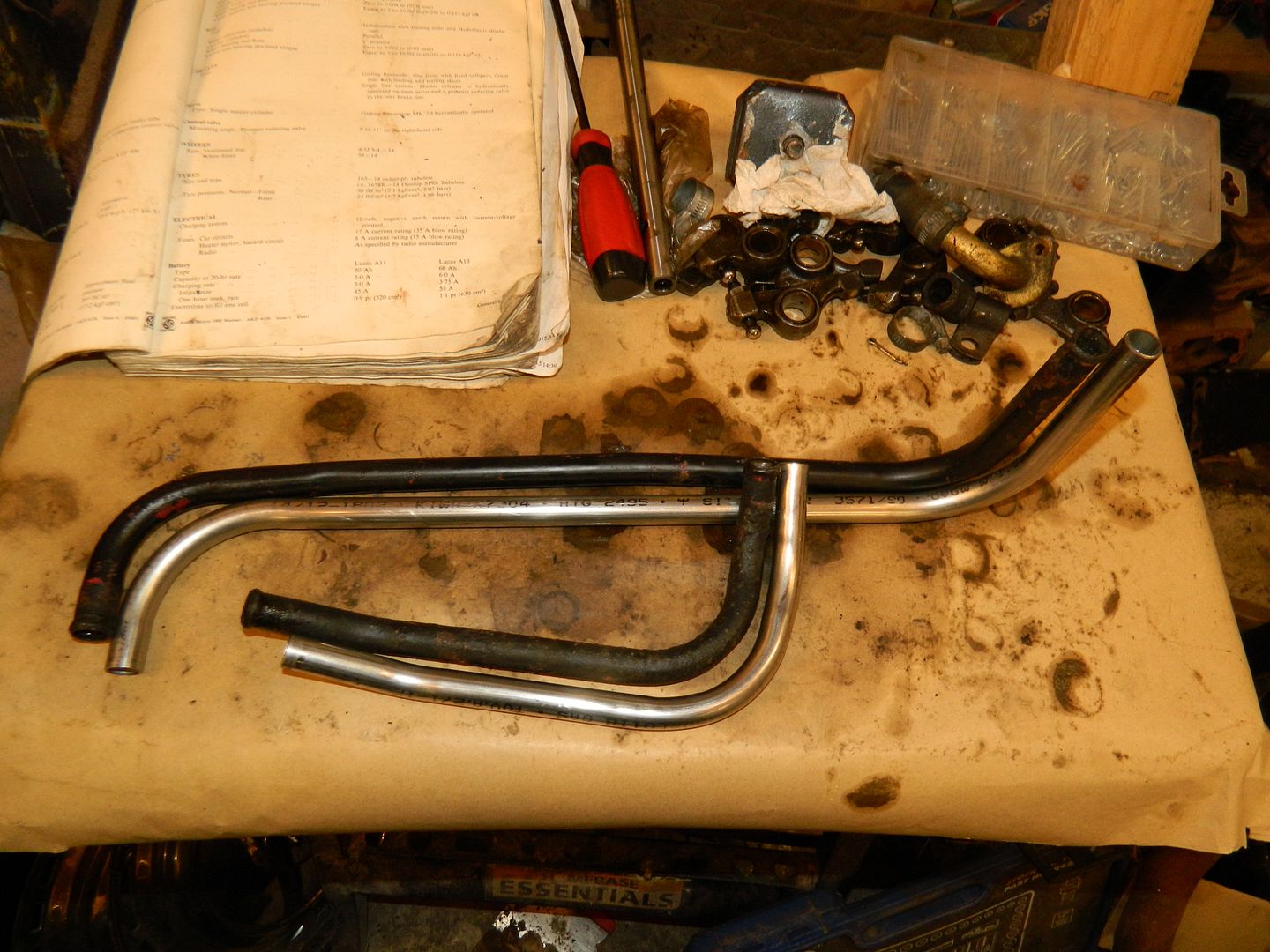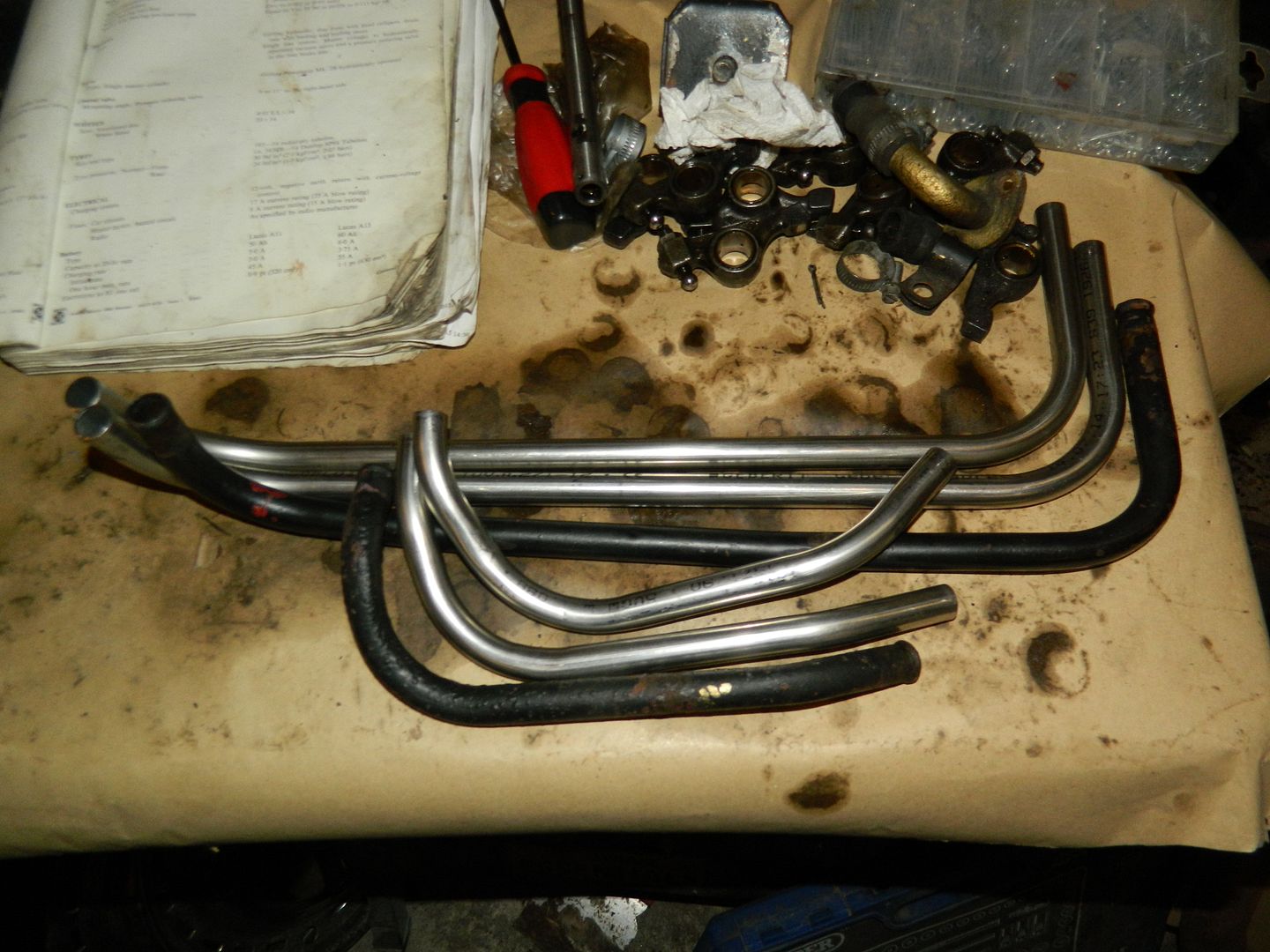|
|
Post by dave1800 on Sept 21, 2015 0:14:21 GMT
Is the pressure cap on the the header tank in good condition and the cap on the radiator can release the pressure if the rubber has deteriorated. The white "smoke" is it oil or water vapour? As Tommy says check the compresion and for any signs of water in oil / oil in water. The pressure in the system may rise if the head gasket has failed, are there any bubbles in the rad when you rev the engine after the stat has opened.
regards
David
|
|
|
|
Post by dave1800 on Sept 21, 2015 6:50:31 GMT
Tommy
Your point about the rusty flakes in the fuel tank is very pertinent. I understand that the level of ethanol in UK petrol is typically around 5% although there is pressure from the EU to introduce E10 which was boycotted by many German drivers when it was introduced there some time ago.
One of the problems with ethanol is that if the fuel is left standing as in a fuel tank in a classic car with an open system over winter then the petrol and ethanol can separate (phase separation) and the absorbed water attack the inside of the tanks. Whereas the advice for keeping rust at bay historically was to keep the tank full, now it should probably be to empty the tank before laying up.
There are products on the market to seal petrol tanks with a plastic compound that is stated to be resistant to alcohol in the fuel. The guidance I have seen indicates that it will unsurprisingly seal filters - you mentioned the gauze filter - is there any way round this you can see? It involves removing the tank and carefully carrying out a set procedure. I wonder if as an alternative it is poosible to empty and dry the tank and remove the loose rust with a vacuum through the gauge sender and then apply a rust stabilier / curer such as phosphoric acid.It looks as though the issue of rusty tanks is only going to get worse.
One of the checks that can be done to see if the fuel lines are clear is to insert a T into the fuel line at the carb and check the fuel pressure. Many vaccuum gauges (remember!) are combined with a fuel pressure scale.
The dangers of rust is not just misfiring or stoppage but worth considering the effects of partial flow potentially leading to weak mixtures at higher speed running with the consequential engine damage and wear.
Thoughts?
regards
David
|
|
|
|
Post by tommydp on Sept 21, 2015 18:34:52 GMT
Thanks, Dave!
As far as I know there's also 5 % ethanol in the 95 petrol up here now. Not sure about the 98, but I've gone over to 95, as 98 is disappearing from lots of stations and in the end there'll be only 95. I've had no trouble with the 95, started filling the white one with it over a year ago.
Surely, I don't have the problem of the petrol staying too long in the tank, as I use it a lot. The blue one is another story though, and over winter they are laid up of course. Worth thinking of emptying the tank. I'm pretty sure I get more fine debris/ rust from the tanks now, compared to earlier, which I can only assume is down to the modern petrol. I don't think the tanks are rustier now, than the cars I drove earlier on good old, leaded petrol. Some of them had been laid up for many years too.
An alcohol resistant sealer might be the way to go in the future. What to do with the gauze filter in the tank, which I guess you all know is not possible to reach.. well, who knows. An MGB site suggested making holes in it with a long screwdriver etc after sealing the tank.
Good idea about checking the fuel pressure. Oh yes, I remember the vacuum gauge! Perhaps the most handy tool for an engine!
In the end, at least I find it important to have a see through in line fuel filter, so you know what's going on. There are discussions about where to fit it. I always put it between the pump and carb, which was the case on all carb engines earlier in my experience. (My dad's Granada, gran's Marina and all other carburettor cars I looked at in the 80s/ 90s).
Of course, the SU AUF 700 pump has an internal filter, but I'm sure an extra won't do any harm. Some fit an additional filter between tank and pump too. Are there any known issues related to doing this. Will it upset the pressure for example? Something I never knew the answer to. Also, I notice the in line filter to be sometimes almost full, sometimes almost empty, without any difference to the running of the car.
On the subject, I just read an article on an MGB page where they said a filter should not be fitted between tank and the SU electrical pump (by the tank) It would somehow disturb the pump if restricted by debris, put it into "on mode", which would lead to burned points. No, I don't remember the full details, just thought I'd mention it while on the subject of rust, debris, pumps and filters.
And another thought! I guess, and hope, those of you running the AUF 700 pump have changed the petrol hose from the steel pipe to the pump. How did you do this? the steel pipe takes an 8mm hose and the inlet a 6mm. Yes the original hose is 8 mm in one end and 6mm in the other!
Tommy
|
|
|
|
Post by dave1800 on Sept 22, 2015 1:22:05 GMT
Thanks Tommy
I do sort of recall that my first Morris Minor had a thimble fitted in the banjo fuel connection to the carb and the car used a SU electric fuel pump mounted on the firewall. I suppose that in theory the contacts could open too slowly if there was a blockage. Nothing that couldn't be cured by fitting a capacitor across the points to reduce the arcing. I believe the original Lucas advice was to replace the fuel pump points every 12K miles but I don't think many did unless there were problems.
Here it is becoming difficult to find fuel without alcohol and all that is sold is E20 and E85. My friend spends 4 months here and then 4 months in Australia and his old Toyota with a carb has to be drained or the fuel system stripped down to get it retarted if he forgets. On the other hand his 2 year old Toyota doesn't suffer (so far). The petrol lawnmowers / strimmers have to be drained after each use or they just refuse to start after only a couple of weeks without use.
Regards
David
|
|
|
|
Post by Penguin45 on Oct 16, 2015 16:28:11 GMT
A little job commisioned by Snoopy:  Stainless steel heater pipes. Borrowed the pipebender from our plumber.  There was 8' of pipe, so I made myself a set as well.   Can't put the flare on the ends - my brake tools are Imperial and the pipe is Metric, which won't quite lock in the holder. Chris. |
|
crabmaster
Member
 
Posts: 44
Attribute: http://www.austineighteenhundred.com.au
|
Post by crabmaster on Oct 17, 2015 9:37:22 GMT
Official information for many engineering standard components such as nuts and bolts, washers, and even pipe fittings, are all written down in the extensive BMC Standards documents. The picture here shows the standard that applies to the type of pipe flare that Chris is wanting to achieve. In the absence of a tool to do the flare, perhaps try finding an compression olive that would slip over the pipe and then compress it with a nut - but then you would have to saw the nut off of course to maintain the original appearance. regards Tony Attachments:
|
|
|
|
Post by Penguin45 on Jan 11, 2016 17:33:15 GMT
He's been doing stuff and hasn't put up any pictures.......  Chris. |
|
|
|
Post by snoopy11 on Jan 11, 2016 18:04:42 GMT
He's been doing stuff and hasn't put up any pictures.......  Mr P..... You are a rotten snitch. All I'm saying at the moment is that I've been reading Andrews thread with interest and I have oil leaks to cure. Here is is a picture to get everyone thinking and commenting Attachments:
|
|
|
|
Post by indianajones on Jan 11, 2016 19:14:52 GMT
One of these?  -Andrew |
|
|
|
Post by snoopy11 on Jan 11, 2016 19:30:54 GMT
No. Still the same car etc. |
|
|
|
Post by Nick RS on Jan 12, 2016 12:20:38 GMT
Upgrade of the B-series. More power and 1950cc?
|
|
|
|
Post by snoopy11 on Jan 12, 2016 19:26:14 GMT
Upgrade of the B-series. More power and 1950cc? That's the winner. Over the the last couple of years the car has developed a few bad oil leaks. The worst of which I think is the crank case oil seal. As this is an engine out job I'm going to go through the engine and rebuild including a bore out, new Pistons fast road cam and stage 2 head. The he engine came out kicking and screaming last weekend. I'm quite glad I started this as two of the engine mounts were totally shot. They looked absolutely fine on the car. I would suggest that everyone who has not changed them recently has a close look at theirs. Pics to to follow when I get into the garage to take them. |
|
|
|
Post by Penguin45 on Jan 12, 2016 23:49:02 GMT
Mr P..... You are a rotten snitch. I never said nuffin, guv, honest. Sounds like fun, anyway. Get some pics up as it develops, be good to see. Chris, Supergrass. |
|
|
|
Post by dave1800 on Jan 13, 2016 0:34:37 GMT
I seem to recall Andrew A threatened us with details of how to get 140 bhp and still have a car suitable for normal road use? You will definitely need to modify that distributor timing now  regards David |
|
|
|
Post by snoopy11 on Jan 16, 2016 17:23:35 GMT
Quite a lot of progress today. He engine is now completely broken down and the main cause of the oil leak confirmed as the crank oil seal.
Gear box and block cleaned and ready to go to the engineers next week.
|
|













